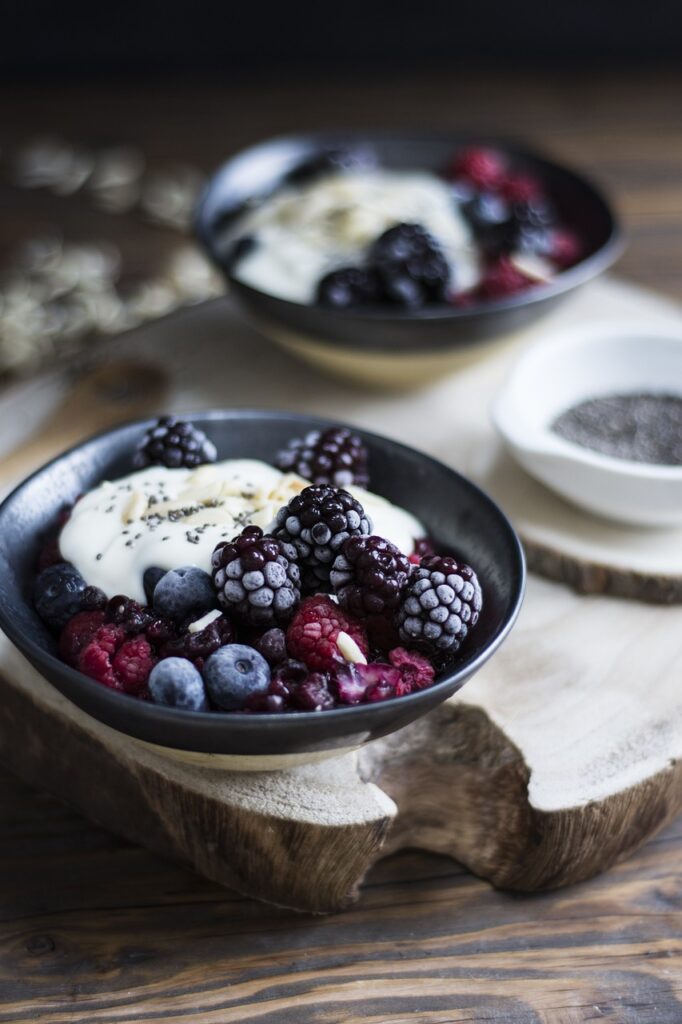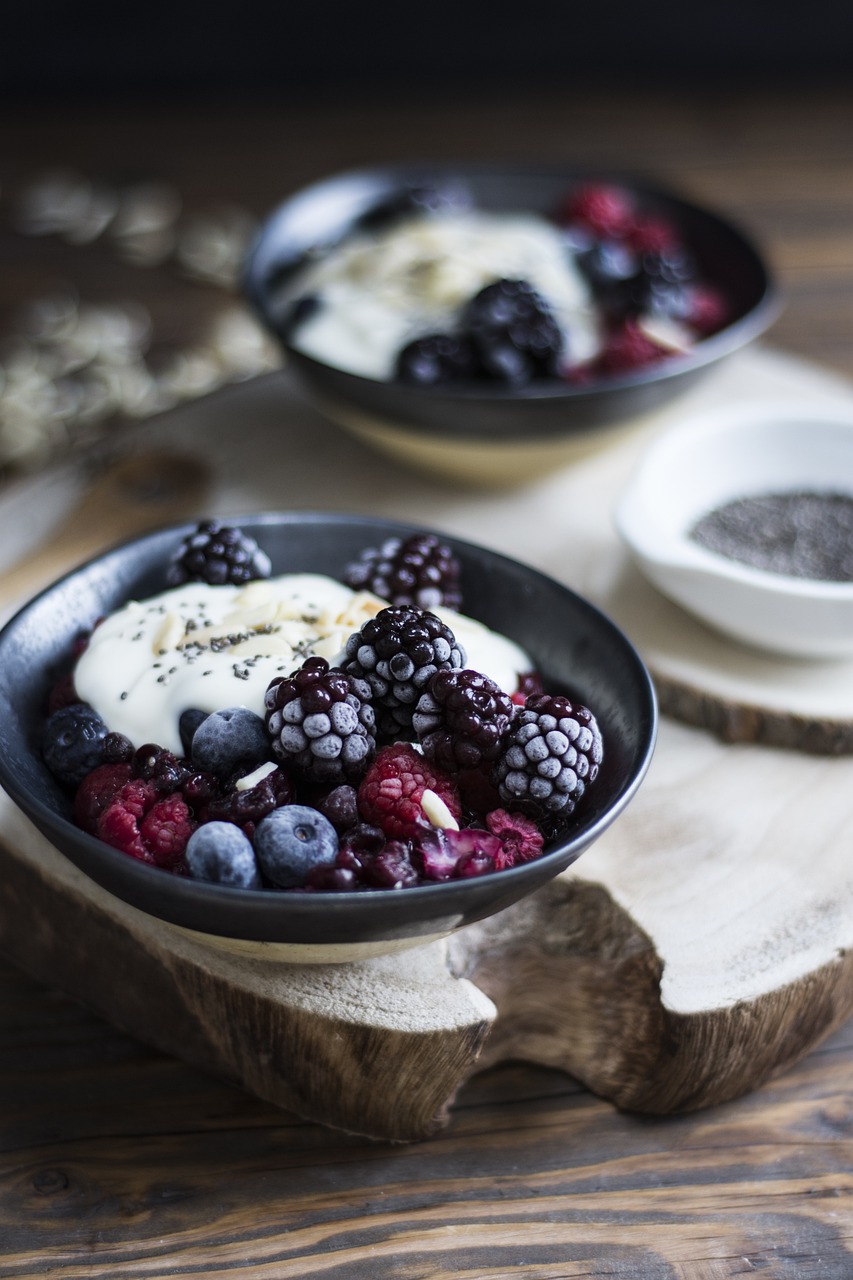Embarking on a keto journey can sometimes feel like navigating uncharted waters, but “Master Keto Cooking: Essential Guides for Every Home Chef” is your trusty compass, guiding you to culinary success with ease. This treasure trove of knowledge is designed to help you effortlessly integrate the keto lifestyle into your daily routine, covering all bases from kick-starting your diet to mastering the art of keto-friendly feasts. Whether you’re battling the dreaded keto flu, searching for the perfect low-carb substitute, or seeking inspiration from those who’ve trodden the path before, these carefully curated guides offer practical advice, step-by-step instructions, and motivational stories to ensure your keto journey is not just manageable, but enjoyable. With a focus on sustainability, variety, and balance, this collection is your all-encompassing resource for thriving on a keto diet while still enjoying the pleasures of home cooking.

Your Keto Journey Begins! Download the Recipes!
Understanding Keto Basics
Defining the ketogenic diet
The ketogenic diet, affectionately called “keto” by its followers, is a high-fat, moderate-protein, and low-carbohydrate diet. Its main goal is to shift your body’s metabolism from using carbohydrates as its primary fuel source to burning fats instead. This switch puts your body into a state called ketosis, where it burns fat for energy, leading to several benefits for your health and well-being.
How ketosis works
Ketosis is a metabolic state in which your body uses fat for fuel instead of carbs. When you significantly reduce your carbohydrate intake, your body begins to deplete its glycogen stores, which it typically uses for energy. Once these stores are low, your body looks for an alternative energy source and starts to convert dietary and stored fats into ketones in the liver, which can be used for energy.
Benefits of a keto lifestyle
Adopting a keto lifestyle can lead to weight loss, improved energy levels, and a reduction in blood sugar and insulin levels. Many people also report enhanced mental clarity and focus, improved cholesterol levels, and a decrease in cravings for sugar and other carbohydrates. It’s a lifestyle that can contribute to overall health and well-being when followed correctly.
Macronutrients breakdown: fats, proteins, and carbs
On a ketogenic diet, your daily calorie intake will come roughly from 70-75% fats, 20-25% protein, and 5-10% carbohydrates. It’s crucial to prioritize healthy fats, such as avocados, nuts, seeds, and olive oil, while keeping protein at a moderate level and carbohydrates to a minimum. This macronutrient distribution helps your body maintain ketosis for optimal fat burning and health benefits.
Setting up Your Keto Kitchen
Essential keto pantry staples
Your keto pantry should include low-carb, high-fat foods and ingredients that support your dietary needs. Almond flour, coconut flour, erythritol or stevia, canned coconut milk, nuts and seeds, and high-quality protein sources, such as grass-fed beef or wild-caught fish, are must-haves. Stocking up on these staples makes it easier to whip up keto-friendly meals on the fly.
Keto-friendly fats and oils
Choosing the right fats and oils is integral to your keto success. Opt for sources of monounsaturated and saturated fats, such as avocado oil, coconut oil, butter, and ghee, for cooking. These not only enhance the flavor of your meals but also support your body’s energy needs on keto.
Must-have kitchen tools for keto cooking
Invest in a few key kitchen tools to make keto cooking simpler and more enjoyable. A good quality food processor for making cauliflower rice, a spiralizer for zucchini noodles, measuring cups and spoons for precise macronutrient tracking, and a slow cooker for easy, fatty stews can all be game-changers in your keto kitchen.
Organizing your kitchen for keto success
A well-organized kitchen can make adhering to a keto lifestyle much easier. Dedicate areas for your keto staples, group similar items together, and keep your most used ingredients within easy reach. Preparing your kitchen in this way ensures that you can maintain your dietary goals without the added stress of searching for what you need.
Mastering Keto Cooking Techniques
Low-carb baking essentials
Low-carb baking is a breeze once you have the right ingredients and know-how. Almond and coconut flours are excellent wheat flour substitutes, while erythritol and monk fruit serve as great sugar replacements. Experiment with these essentials to create keto-friendly versions of your favorite baked goods, from bread to desserts.
Keto meal prep strategies
Meal prep is a lifesaver on a ketogenic diet. Dedicate a few hours each week to preparing keto meals and snacks. Cook in batches and store portions in the fridge or freezer for quick, easy access. This not only saves time but also keeps you on track with your dietary goals, reducing the temptation to reach for non-keto options.
Creating flavorful keto sauces and dressings
Sauces and dressings can turn plain keto meals into culinary delights. Incorporate healthy fats like olive oil and avocado into homemade mayo, ranch dressing, or pesto. Spices, herbs, and acidic components like lemon juice or vinegar can add layers of flavor without adding carbs.
Innovations in keto cooking
The keto community is continually finding creative ways to enjoy their favorite meals within the boundaries of a low-carb diet. Innovations like cauliflower pizza crusts, zucchini lasagna sheets, and keto-friendly “rice” made from broccoli or cauliflower allow you to enjoy the essence of traditional dishes without breaking your carb limit.
Keto Meal Planning
Designing a keto meal plan
Creating a keto meal plan requires understanding your daily macronutrient targets and finding recipes that meet these requirements. Start by planning your meals around your protein source, then add keto-friendly vegetables and fats to fulfill your nutritional needs. This structured approach ensures you stay within your carb limit while enjoying varied and satisfying meals.
Keto recipes for breakfast, lunch, and dinner
Breakfast options could include avocado and egg bowls or almond flour pancakes, while lunch and dinner might feature zucchini noodle pasta with creamy avocado sauce or a hearty beef and mushroom stew. Don’t forget to add low-carb sides like sautéed greens or cauliflower mash for complete meals that will keep you satisfied and in ketosis.
Planning keto meals for the week
Write down your meal plan for the week, including all meals and snacks. This helps you shop more efficiently and avoid the temptation of off-plan foods. Consider thematic nights, like “Taco Tuesday” with keto-friendly taco shells, to add fun and variety to your meal planning.
Incorporating intermittent fasting into your keto diet
Intermittent fasting (IF) can amplify the benefits of a keto diet by further enhancing ketosis and accelerating fat loss. Common IF methods include the 16/8 method, where you fast for 16 hours and eat within an 8-hour window. Combining IF with keto can lead to improved results, but listen to your body and adjust as needed.

Navigating Challenges and Plateaus
Overcoming the keto flu
The “keto flu” refers to flu-like symptoms experienced by some people when first starting keto. It’s a temporary phase that can last a few days to a week. Stay hydrated, increase your electrolyte intake, and consider easing into carb restriction gradually to mitigate symptoms.
Dealing with cravings and cheat days
Cravings, especially in the beginning, are normal. Combat them with keto-friendly alternatives to your favorite snacks. If you decide to have a cheat day, don’t beat yourself up. Return to your keto plan as soon as possible, and use the experience to strengthen your resolve.
Adjusting your diet for weight loss plateaus
If you hit a weight loss plateau, first ensure you’re accurately tracking your macros. Consider adjusting your calorie intake, increasing your physical activity, or incorporating intermittent fasting. Sometimes, a slight tweak is all it takes to get back on the weight loss track.
Keto on the go: maintaining ketosis while dining out
Dining out while on keto is entirely possible. Focus on protein and veggies, ask for meals to be prepared without sugar or starch, and don’t be shy about requesting substitutes like extra vegetables instead of a side of fries. Planning ahead can help you maintain ketosis without sacrificing your social life.
Keto-Friendly Substitutions
Finding substitutes for your favorite carbs
Cravings for high-carb foods can be managed by finding keto-friendly substitutes that satisfy without kicking you out of ketosis. Cauliflower can replace rice or potatoes, almond flour can take the place of wheat flour, and zucchini noodles make a great pasta alternative. These swaps allow you to enjoy the essence of your carb-heavy favorites.
Keto alternatives to sugar
In a keto kitchen, traditional sugar is out, but that doesn’t mean you have to give up on sweetness. Erythritol, stevia, monk fruit, and allulose are excellent sugar alternatives that can sweeten everything from your morning coffee to your favorite keto desserts without impacting your blood sugar levels.
Creating low-carb versions of high-carb classics
With a little creativity, you can produce low-carb versions of high-carb classics. Think pizza with a cauliflower crust, tacos with lettuce wraps instead of corn tortillas, and sushi rolls wrapped in cucumber instead of rice. These alternatives allow you to indulge in your favorite meals healthily.
Using keto-friendly flours for baking
Baking on keto is not only possible, but it can also be utterly delicious. Almond flour and coconut flour are the workhorses of keto baking, providing the foundation for everything from bread to birthday cakes. Remember that these flours behave differently than traditional wheat flour, so it might take some experimentation to get your recipes perfect.

Integrating Exercise with Keto
The best types of exercise on a ketogenic diet
While keto is primarily a dietary approach, combining it with exercise can enhance your health and weight loss efforts. Focus on a mix of cardio for fat burning and strength training to build muscle. Exercises like walking, cycling, swimming, and lifting weights are excellent choices on a keto diet.
Timing your workouts with your keto eating schedule
To maximize energy and performance, consider timing your workouts with your eating schedule. Working out in a fasted state can increase fat burning, while exercising after a meal can provide the extra energy needed for more intense sessions. Experiment to find what works best for your body.
Supplements to support exercise on keto
Certain supplements can support your workout performance on keto. Electrolytes can help prevent cramping, especially in the beginning stages of keto. MCT oil can provide a quick energy source before workouts, and BCAAs may help with muscle recovery and growth.
Recovering from workouts on a keto diet
Adequate hydration and electrolyte balance are crucial for recovery, especially on keto. Incorporate foods rich in potassium, magnesium, and sodium to replenish what’s lost through sweat. Also, ensure you’re consuming enough calories and protein to promote muscle repair and growth.
Social and Family Life on Keto
Staying keto at social gatherings
Don’t let social gatherings derail your keto progress. Bring a keto-friendly dish to share, eat a small keto meal beforehand to reduce cravings, and focus on socializing rather than eating. With a bit of planning, you can enjoy these events without compromising your diet.
Keto-friendly alcoholic beverages
If you choose to drink alcohol, opt for keto-friendly options. Dry wines, champagne, and hard liquors mixed with zero-carb mixers are your best bet. Remember, alcohol can impact your judgment and make it harder to stick to your diet, so consume it in moderation.
Educating friends and family about your keto choices
Explaining your dietary choices to friends and family can sometimes be challenging. Be prepared to share the benefits you’re experiencing and the research behind keto. Often, seeing your results will be all the convincing they need. Offer to share delicious keto meals to show that your diet is not only healthy but also enjoyable.
Keto meals everyone will love
Creating keto meals that the whole family will love is entirely possible. Focus on hearty, flavorful dishes like meatballs in low-carb marinara sauce, cauliflower mac and cheese, or a loaded taco salad. These meals are so delicious that no one will miss the carbs.
Long-Term Keto Planning
Evolving your keto diet with your health goals
As your health goals change, so too might your approach to keto. Whether you’re focusing on muscle gain, maintenance, or further weight loss, adjust your macronutrients and calories to support your current objectives. Fine-tuning your diet can help you continue making progress over the long term.
Adjusting your keto approach as you age
Your body’s needs change as you age, and your keto diet should reflect that. Older adults might need more protein to support muscle maintenance, while those managing health conditions like diabetes may need to adjust their carb intake. Regularly reassess your dietary needs to ensure your keto diet supports your health at every stage of life.
Managing and preventing common long-term keto complications
Staying hydrated, ensuring adequate fiber intake, and monitoring your electrolyte levels can help prevent common issues like constipation and electrolyte imbalances. Regular check-ins with a healthcare provider can help catch any potential complications early and keep your keto journey on track.
Success stories: staying motivated with keto
Hearing about others’ success on keto can be incredibly motivating. Whether it’s significant weight loss, improved health markers, or enhanced mental clarity, these stories remind you of the potential benefits of sticking with your keto lifestyle. Let them inspire you to persist through challenges and celebrate your own successes along the way.
Advanced Keto Hacks and Tips
Utilizing MCT oil for enhanced ketosis
MCT oil is a powerful tool for keto dieters. It’s rapidly absorbed and converted into ketone bodies, providing a quick energy source and potentially helping you enter ketosis more quickly. Add it to your morning coffee or smoothies for an energy boost without the crash.
Intermittent fasting strategies for keto dieters
Intermittent fasting can synergize with keto to deepen ketosis and accelerate weight loss. Start with shorter fasting windows and gradually increase as your body adapts. Combining these approaches can also improve mental clarity and energy levels, making it a powerful addition to your keto toolkit.
Keto cheats and when to use them
If you choose to incorporate cheat meals or days, do so mindfully. Consider using them as strategic refeeds to boost your metabolism or to coincide with social events. However, remember that frequent cheats can hinder your progress, so use them sparingly and plan ahead to mitigate any setbacks.
Leveraging technology for keto success
Technology can be a valuable ally in your keto journey. Utilize apps to track your macronutrients, find keto recipes, and connect with the keto community for support and inspiration. Fitness trackers can also help you monitor your activity levels and ensure you’re staying active enough to support your keto diet.
In conclusion, adopting and maintaining a ketogenic lifestyle can be deeply rewarding, offering numerous health benefits and a newfound appreciation for wholesome, nutritious foods. By understanding the basics of keto, preparing your kitchen, mastering keto cooking techniques, and navigating social situations, you can fully embrace and enjoy a sustainable keto lifestyle. Keep learning, experimenting, and celebrating your successes along the way.



